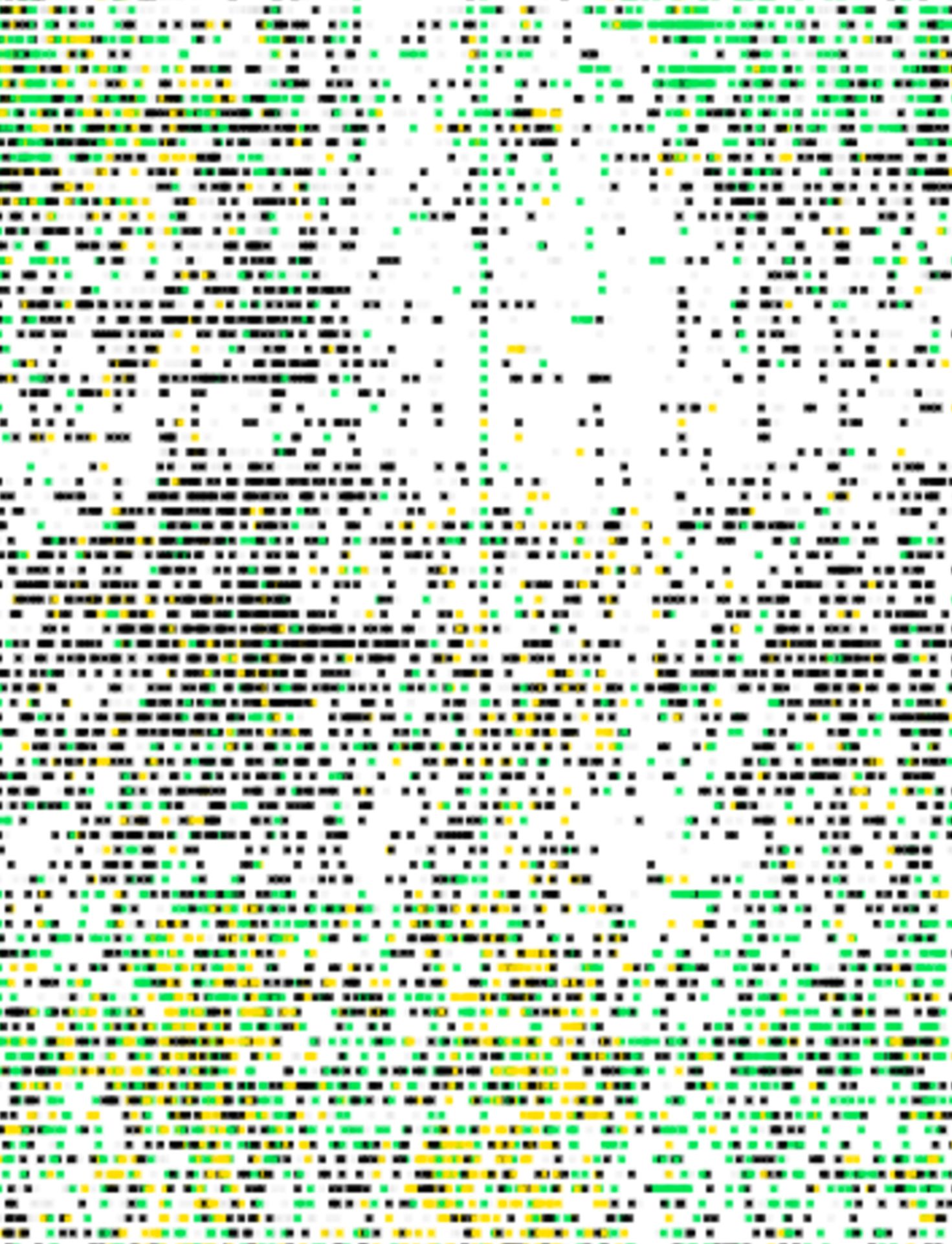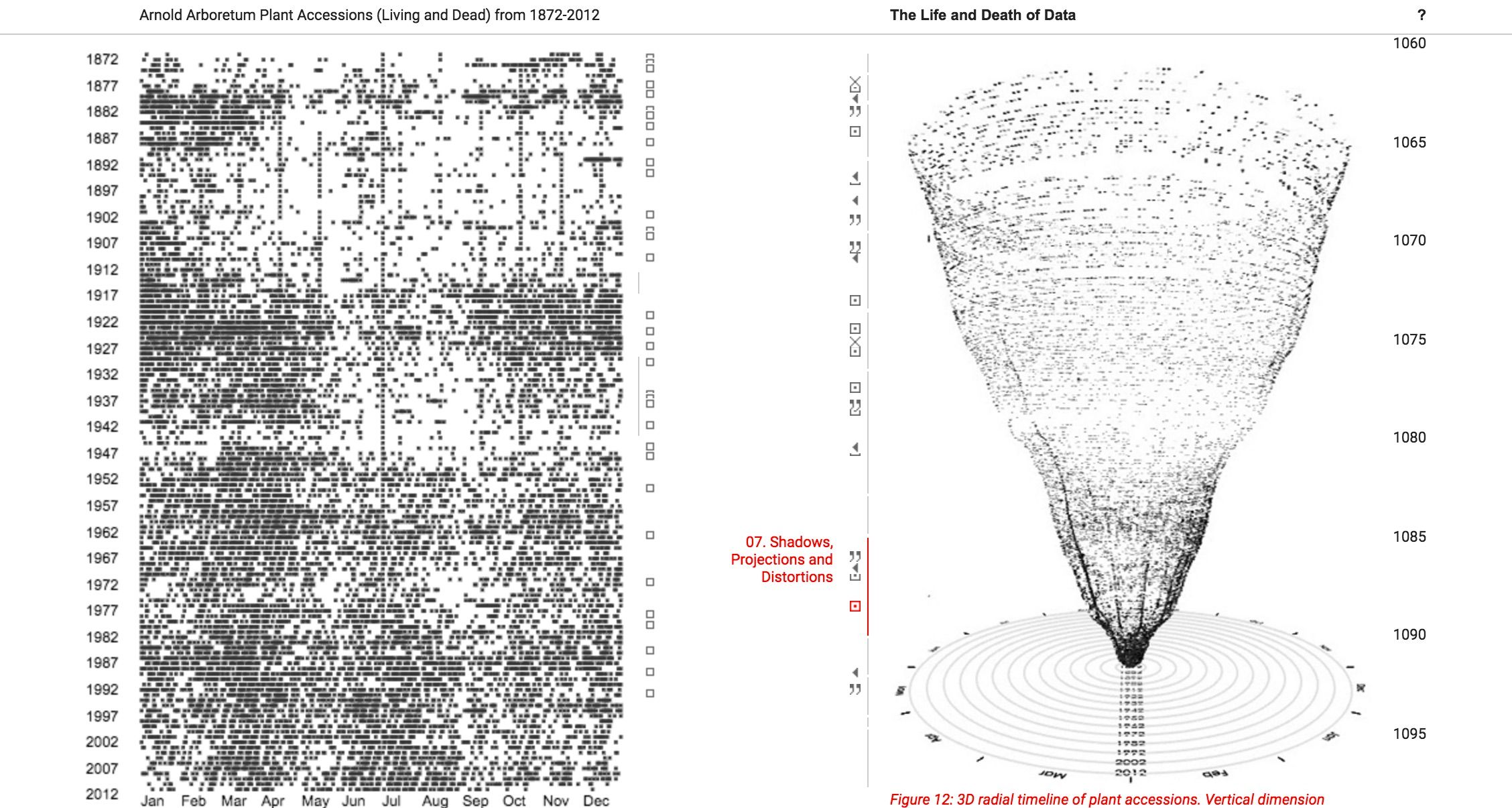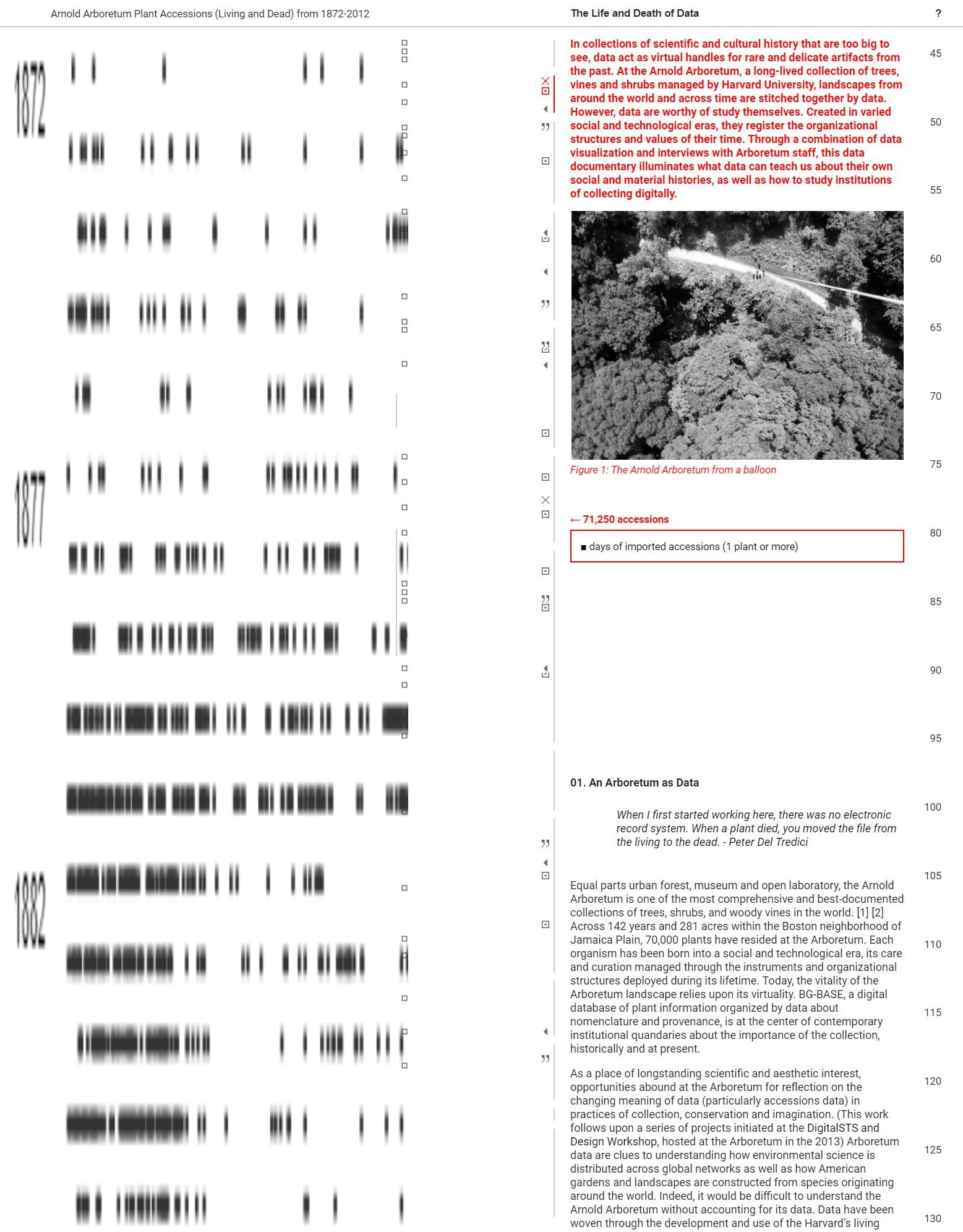Life and Death of Data
In collections of scientific and cultural history that are too big to see, metadata act as virtual handles for rare and delicate artifacts from the past.- Time
- –
- Location
- Arnold Arboretum

At the Arnold Arboretum, a long-lived collection of trees, vines and shrubs managed by Harvard University, landscapes from around the world and across time are stitched together by metadata. However, metadata are worthy of study themselves. Created in varied social and technological eras, they register the organizational structures and values of their time. Through a combination of data visualization and interviews with Arboretum staff, this essay illuminates what metadata can teach us about their own social and material histories, as well as how to study collections digitally.
An interactive project developed by Yanni Loukissas and the metaLAB team, designed and implemented in collaboration with Krystelle Denis, Life and Death of Data seeks to analyze and visualize the historical archives of Harvard University’s Arnold Arboretum. Equal parts urban forest, museum and open laboratory, the Arnold Arboretum is one of the most comprehensive and best-documented collections of trees, shrubs, and woody vines in the world. Across 142 years and 281 acres within the Boston neighborhood of Jamaica Plain, 70,000 plants have resided at the Arboretum. Each organism has been born into a social and technological era, its care and curation managed through the instruments and organizational structures deployed during its lifetime. Today, the vitality of the Arboretum landscape relies upon its virtuality. BG-BASE, a digital database of plant information organized by data about nomenclature and provenance, is at the center of contemporary institutional quandaries about the importance of the collection, historically and at present.
Published at lifeanddeathofdata.org, the project seeks to model a new genre of publication that brings together the micro, meso, and macro scales in a single publication that links data visualizations to textual argument.

